China's Tiangong-1 space station: When will lab crash land this weekend

China’s out-of-control space station will plummet back to Earth in a fiery dive over the Easter weekend, with experts unable to predict for certain where it will land.
Tiangong-1 is expected to re-enter Earth's atmosphere somewhere between the 43rd north and south parallels most likely on Monday afternoon, later than first predicted due to changes in the sun's predicted activity.
“If you’re in the right place at the right time, and the sky is clear, it will be quite spectacular,” said Holger Krag, head of ESA’s space debris office in Darmstadt. “It will be visible to the naked eye, even in daylight, and look like a slow-moving shooting star that splits into a few more shooting stars. You might even see a smoke trail.”
The European Space Agency (ESA) puts the probability of a person being struck by space debris at one in 1.2 trillion - 10 million times less likely than getting hit by lightning.
“In the history of spaceflight, no casualties due to falling space debris have ever been confirmed,” said the ESA.
The space station had initially been expected to crash land during Saturday or Sunday night, but because the sun's activity is weaker than predicted, the atmosphere has not ballooned as much. Tiangong-1 will therefore experience less drag and descend more slowly than expected, ESA said. The re-entry window is still variable, however.
Potential crash area for the 8 tonne space module Tiangong-1
The station was considered to be a “potent political symbol” of Chinese ambition when launched in 2011, but ends its life an expensive piece of space junk whose ultimate fate has captured the world’s attention.
A symbol of China’s space superpower ambitions
Tiangong-1, or the “Heavenly Palace”, was launched aboard a Long March 2F/G rocket from the vast Gobi Desert, Inner Mongolia, in 2011, as a beacon of China’s ambition to become a space power.
The 10.4-metre long spacecraft is China’s first prototype space station and served as an experimental testbed for future projects.
China’s National Space Administration (CNSA) utilised Tiangong-1 for testing vital orbital and docking technology, successfully receiving one uncrewed and two crewed missions - including the country’s first female astronaut, Liu Yang, in 2012.
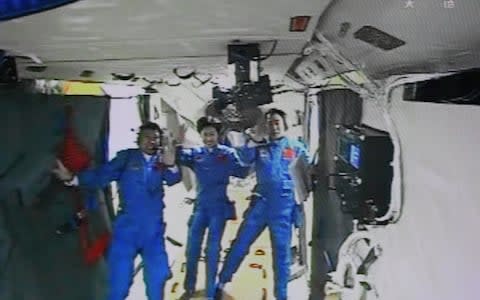
A precursor to China’s aim of launching a space station by 2020, Tiangong-1 had a planned operational timeline of two years before the length of its mission was extended.
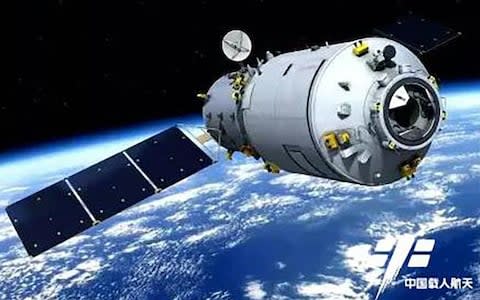
In March 2016, Tiangong-1 stopped functioning after ground teams lost control of the craft, and since then it has been orbiting Earth and slowly dropping in altitude.
Defunct spacecraft are typically brought back down to Earth with a controlled re-entry, burning up above the Pacific Ocean, with any debris left falling into an unpopulated ‘spacecraft cemetery’ away from inhabited areas.
With China powerless to command the defunct spacecraft’s engines to fire for a controlled re-entry, it is impossible to forecast where the detritus will land.
China is playing catch-up in the space race, launching Tiangong-1 40 years after the Soviet Union launched the Salyut 1 - the original space station. It hopes to become a space superpower with plans to put a man on the moon, land a rover on the dark side of the moon and harbours ambitions to capture an asteroid.
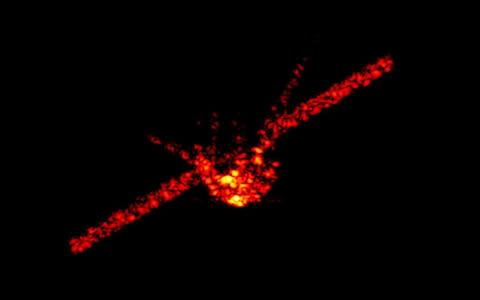
An unpredictable crash landing
The precise time and location of where the space junk might land cannot be accurately predicted, with the ESA currently estimating it will be sometime between 31 March to 4 April, however experts say this is “highly variable”.
Based on Tiangong-1’s orbital inclination, reentry will take place anywhere between 43º north and 43º south latitudes, which includes European nations Spain, France, Portugal and Greece, as well as many other regions and continents, while there is “zero” chance any junk will hit the UK.
There is a slightly higher probability the debris from Tiangong-1 will land in areas including New Zealand, Tasmania, several northern US states and the Middle East.
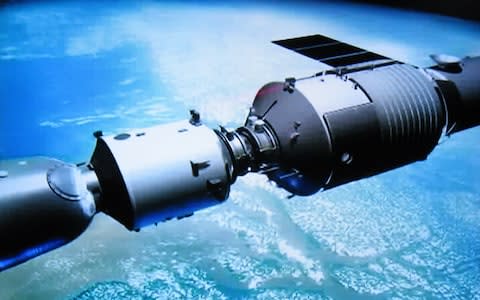
The ESA say that at “no time will a precise time/location prediction be possible”. There are a number of factors as to why its re-entry point cannot be accurately predicted, including uncertainty over the spacecraft’s orientation, exact mass and velocity.
Members of the public have been warned not to touch any debris that may fall to the ground due to the potential presence of a highly toxic and corrosive substance called hydrazine.
The space junk lottery
The doomed spacecraft will substantially burn up in the Earth's atmosphere upon re-entry, however it is possible some parts will survive the intense heat and hit the ground.
“It will mostly burn up due to the extreme heat generated by its high-speed passage through the atmosphere,” say the ESA.
However the probability of actually being hit by a piece of debris from the Tiangong-1 is 10 million times smaller than the yearly chance of being hit by lightning, according to the ESA.
How the Tiangong-1 space station compares
“When considering the worst-case location the probability that a specific person will be struck by Tiangong-1 debris is about one million times smaller than the odds of winning the Powerball jackpot,” adds The Aerospace Corporation, an American non-profit space consultancy.
“Only one person has ever been recorded as being hit by a piece of space debris and, fortunately, she was not injured.”
That person is thought to be Oklahoma resident Lottie Williams. She was struck on the shoulder by a returning piece of a Delta II rocket while walking through a park in 1997.
In 2017, a Kazakh man employed to clean up launch debris was killed in wildfires sparked by falling debris from a Russian rocket.
More than 500,000 pieces of space junk are being tracked as they orbit Earth, travelling at speeds of up to 17,500mph - fast enough to damage a satellite of spacecraft.
Skylab - The American precedent
In 1979 the world was gripped awaiting the return of America’s first space station, Skylab, as it tumbled back to Earth following 2,249 days in orbit.
It remains the largest uncontrolled reentry in spaceflight history with Nasa unable to accurately predict where the 85-tonne craft would land.
In the UK, British Airways prepared to delay its flights over fears it would hit Cornwall, prompting some holidaymakers to take cover in an old smuggler’s cave.
Several thousand protective hats were sold to Americans fearful of being hit by the space junk, while a local radio station in Atlanta gave away T-shirts labelled “official Skylab targets” with imprinted bullseyes, others held Skylab re-entry garden parties.
Skylab’s re-entry captured the media’s attention worldwide, with Filipino president Ferdinand Marcos appearing on national TV to urge calm, while a San Francisco newspaper offered a $10,000 (£7,000) prize to the first person to bring a piece of the spacecraft to its offices as part of a promotional campaign.
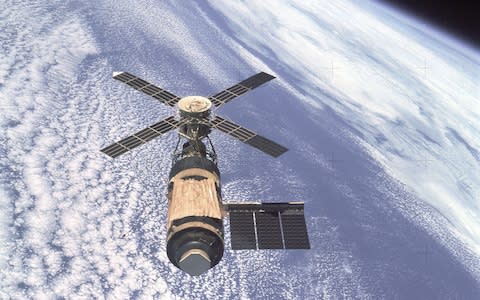
Partially disintegrated pieces of Skylab eventually landed in a sparsely populated area in Western Australia, a few hundred miles from Perth, despite efforts from Nasa to redirect it towards a remote spot south-east of Cape Town, South Africa.
A miscalculation by Nasa of just 4 per cent on the air drag during tumbling meant Skylab debris landed hundreds of kilometres further east than experts had predicted, scaring a farmer’s sheep in the remote town of Rawlinna, but there were no casualties.
Skylab’s crash landing Down Under resulted in souvenir hunters descending on a 300-mile area with planes and jeeps, as well as the town of Esperance flippantly fining Nasa $400 for littering and a letter of apology from then US president Jimmy Carter.

